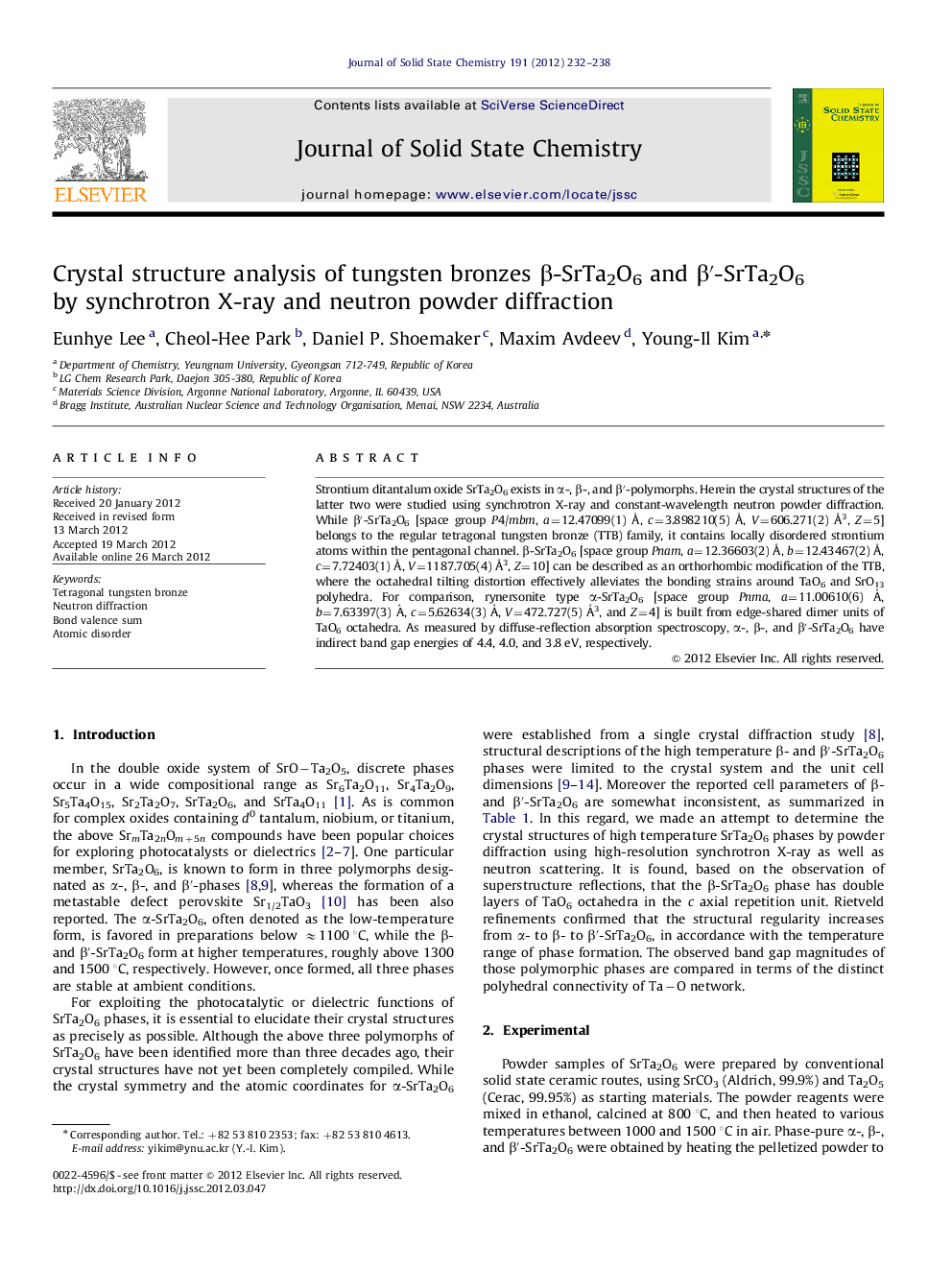| Article ID | Journal | Published Year | Pages | File Type |
|---|---|---|---|---|
| 1330663 | Journal of Solid State Chemistry | 2012 | 7 Pages |
Strontium ditantalum oxide SrTa2O6 exists in α-, β-, and β′-polymorphs. Herein the crystal structures of the latter two were studied using synchrotron X-ray and constant-wavelength neutron powder diffraction. While β′-SrTa2O6 [space group P4/mbm, a=12.47099(1) Å, c=3.898210(5) Å, V=606.271(2) Å3, Z=5] belongs to the regular tetragonal tungsten bronze (TTB) family, it contains locally disordered strontium atoms within the pentagonal channel. β-SrTa2O6 [space group Pnam, a=12.36603(2) Å, b=12.43467(2) Å, c=7.72403(1) Å, V=1187.705(4) Å3, Z=10] can be described as an orthorhombic modification of the TTB, where the octahedral tilting distortion effectively alleviates the bonding strains around TaO6 and SrO13 polyhedra. For comparison, rynersonite type α-SrTa2O6 [space group Pnma, a=11.00610(6) Å, b=7.63397(3) Å, c=5.62634(3) Å, V=472.727(5) Å3, and Z=4] is built from edge-shared dimer units of TaO6 octahedra. As measured by diffuse-reflection absorption spectroscopy, α-, β-, and β′-SrTa2O6 have indirect band gap energies of 4.4, 4.0, and 3.8 eV, respectively.
Graphical AbstractDifference Fourier map for β′-SrTa2O6 at z=0.Figure optionsDownload full-size imageDownload as PowerPoint slideHighlights► Structure refinements of β-SrTa2O6 and β′-SrTa2O6. ► Strontium disorder in tetragonal tungsten bronze β′-SrTa2O6. ► Orthorhombic distortion and cell doubling in β-SrTa2O6.
